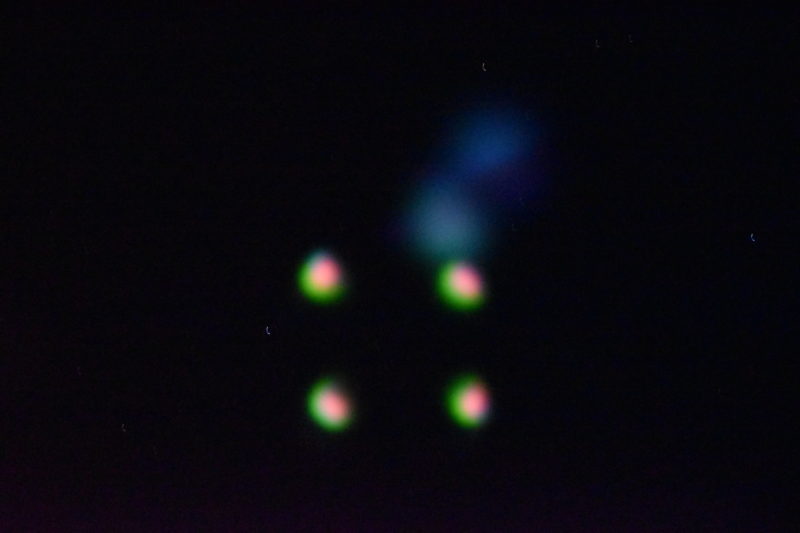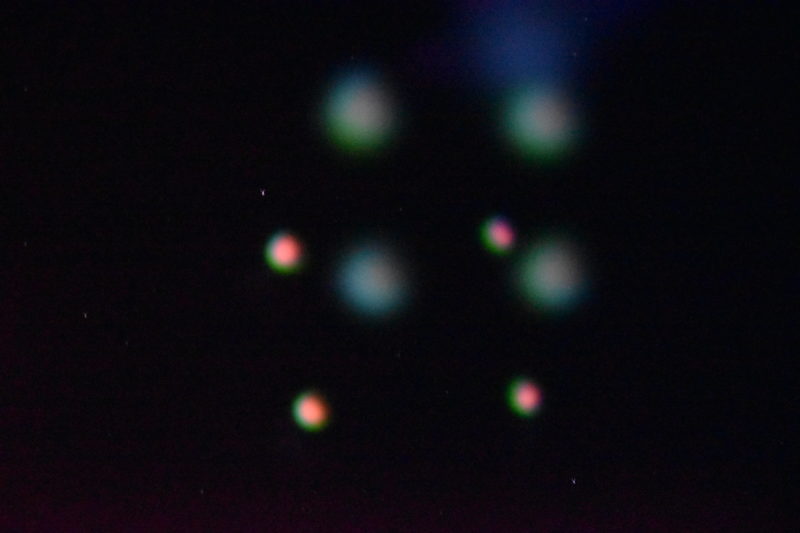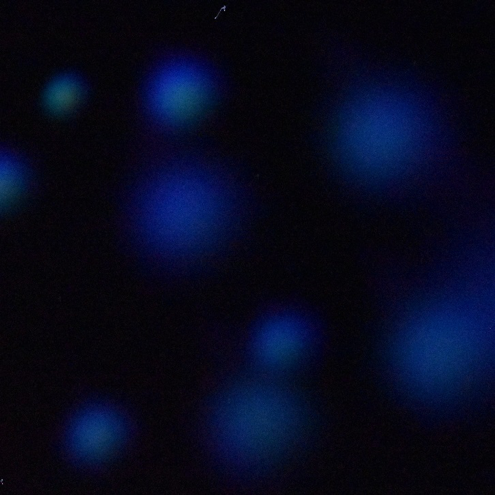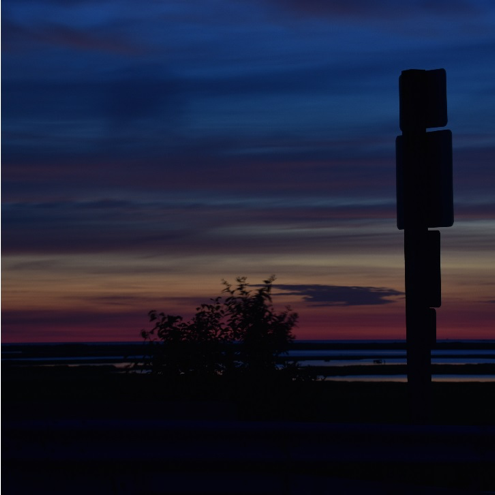July 22, 2017 9:00 pm
Eleventh Time’s a Charm: NASA’s Wallops Island Artificial Cloud Launch
This guest blog post is by long-time StarTalk fan, Ted Shevlin. In his spare time, Ted chases rocket launches, aurorae, tornadoes… any trip where he has the potential to expend a lot of time and effort for absolutely no results. That only makes the reward sweeter, such as when he finally saw his first NASA Wallops Island launch.
As a city boy, seeing the center of the Milky Way at night freaks me out. It clearly indicates to me that I’m out of my element: I’m not in Kansas, anymore. Or the city, as it were. The Milky Way was twinkling down on me on June 29 as I assembled my tripod on the unlit causeway overlooking Shelly Bay and the Queen Sound Channel. I was to point a camera toward the Terrier-Improved Malemute sounding rocket at NASA’s Wallops Island launch facility in Virginia and hope that this launch attempt would end better than the ten before it.
The Milky Way belied the truth: We earthbound beings would not witness sunrise for over an hour, but a hundred miles above, the Earth curved away sufficiently to allow the sun to shine in space. These conditions would allow NASA scientists to visually observe particle motions in the ionosphere. Said sounding rocket carried a payload of ten canisters of chemical tracers to be dispersed into the upper atmosphere. In combination, the chemicals would form artificial clouds to be lit by the rising sun. Scientists at Wallops and/or Duck, North Carolina would observe and measure the dispersion for their research.
I arrived that day at 4:09 am for a 4:25 am launch. While I’d like to take credit for my perfect timing, the truth is that I did not know if I would even make it. I live nowhere near Wallops Island, and to see this launch would require an all-nighter drive. A social appointment the night before also precluded an early departure where I could get some winks before the big moment.

Two faded “watermelon petals” and four new ones. Credit: Ted Shevlin.
I’ve seen many a launch in my days. But for some reason, people look at me with less confusion when I strap into an airplane bound for Orlando than when I’ve strapped into a car headed to Wallops. For the former, the most persistent question is always, “What, no Disney?” Here, the more common reaction was, “Are you insane?” I guess 4:00 am sounding rocket launches aren’t people’s cups o’ tea.
The way I see it, if you want to win, you have to play the game. I didn’t attempt all ten previous launches, making my own weather judgments before undertaking the 600-mile round trip. But I did try twice prior to this, once on an ill-fated Father’s Day excursion that ended in a father-son tire change and a 150-mile drive home on a donut. And with each decision not to go, I constantly second-guessed myself, sweating bullets until the official scrub decision came.
Most launch windows started a little after 9:00 pm, after sunset. Unfortunately, clouds (real ones) often littered the sky at night, forcing one scrub after another. After a series of bad days, NASA took a pause and then flipped the launch window to the early morning, beginning at 4:25 am. In my experience, though, nighttime launches tend to go more often as planned, and sure enough, the forecast on the morning of June 29 called for clear skies. So I had to go to this one.
From the causeway, I could hear the launch control chatter from loudspeakers at the visitor’s center, maybe a half mile away. However, I could not see or hear anything from my phone. No service here. In fact, no nothing here, really. Were it not for the distant murmur of announcer plus flight controllers, there’d be no indication that I was anywhere near a launch pad. I wouldn’t have even known where to aim my camera had it not been for a seasoned spectator who pointed to the spot on a previous night!

The final four and the remnants of older clouds. Credit: Ted Shevlin.
As 4:25 am neared, I became increasingly excited. Having witnessed so many scrubs before – many more scrubs than launches – I tend to tamp down my own anticipation until the last minutes of a countdown. Too many emotional highs followed by scrub-induced roller coaster drops. Thankfully, the Terrier-Malemute is a two-stage solid rocket. Solid fuel means makes for a simpler rocket than liquid fuel. So, I allowed myself the jitters and emotional excess that may have been reserved before, say, a Falcon 9 launch.
“5, 4, 3” – the rocket was off the ground before “2, 1”! I forgot that there’d be a sound delay from the countdown speakers from their distance. Oops! To make matters worse, the seasoned spectator had led me astray: My camera was pointed in the wrong direction! By the time my lens caught up with its target, the first stage was already falling back to Earth. Unlike the big rockets that normally leave Earth at a rate of 3 Gs, this sounding rocket pulled about 26 Gs. And unlike a space shuttle night launch that you can read a newspaper by, this was a bright match stick that escaped Earth nearly as quickly as my brain could process what was happening. Oh well, forget the video. Even NASA’s official video could not capture the launch successfully:
The sound came and went. A mighty roar… and then it was gone. Meanwhile, a point of light (the first stage) dropped to Earth like a fireworks ember as an increasingly dimmer “star” (the second stage) traversed the heavens. Within seconds, the star looked like any other satellite you might see on a clear night.
Minutes passed.
Suddenly, two lobes of colorful, bright light formed in the sky. Some news articles predicted the light spectacle as an “artificial aurora.” Wrong. I’d call them pink flower petals with green watermelon rinds no larger than the moon above your head. As they faded, four more petals came into being in square formation. (This could almost be a scene out of Fantasia if the right score supported it.) A short while after that, the final four. Had I woken in the dead of the night to the sight of these so-called “clouds,” I would have audibly gasped in fear and bewilderment. The petals were surreal and out of place, as though they did not belong to this world. The sight of this evoked vivid memories and the same eerie, ethereal sensation from when I witnessed this same experiment some years ago from New York City. Amazing to think that these figures in the night sky could have such a visual radius.

Over the course of the next half hour, the watermelon petals faded to blue and eventually ceded to the now-brightening sky. I felt very fortunate to have witnessed this firsthand. There was so much hype about this launch in social media; so many thousands of people hoped for an evening launch so they would be awake to see it. Unfortunately, the pragmatism of science and space agencies outweighs the wishes of spectators, and when the early-morning launch availability presented itself, NASA proceeded forth with the countdown. Nonetheless, there will be more launches in the future, and many other interesting air- and space-borne experiments to come. And I hope to be there again, this time with my camera pointed rightly. Fortunately, it is not just nature, but also NASA, that gives us reasons to keep looking up.
– Ted Shevlin

Sunrise on the causeway. Road signs and all. Credit: Ted Shevlin.
Get the most out of StarTalk!
Ad-Free Audio Downloads
Ad-Free Video Episodes
Stickers & Mugs
Live Streams with Neil
Priority Cosmic Queries
Early-Access Videos
Learn the Meaning of Life
...and much more

 Become a Patron
Become a Patron

